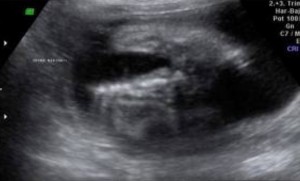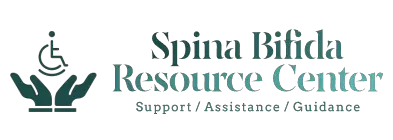Common Spina Bifida Ultrasound Prenatal Diagnosis FAQs
(Article updated on April 21, 2022)
This page contains the most popular questions people have about Spina Bifida Ultrasound. On this page, you can find the answers to the most asked and searched questions on the numerous ways and methods to detect this birth defect during pregnancy.
Head and spine abnormalities can be detected in the first trimester of pregnancy. Studies show that the diagnosis of SB during pregnancy has led to improved clinical practice, improved pregnancy-related outcomes, and better prenatal management of the pregnancy. One of the methods to detect spina bifida during pregnancy is an ultrasound.
What prenatal diagnostic tests would detect spina bifida?
The prenatal diagnostic tests that would detect spina bifida are Alpha-Fetoprotein (AFP) test, Ultrasound, and Amniocentesis. The AFP test, which is a simple blood test that is carried out between 15 weeks and 20 weeks of pregnancy, is the most commonly used prenatal diagnostic test to detect spina bifida.
An Ultrasound, a harmless and non-invasive test, is one of the prenatal diagnostic tests to detect a spinal cord defect caused by SB. An ultrasound can also be used to find out other reasons for high levels of AFP.
The Amniocentesis test is usually performed between 15 weeks of pregnancy and 20 weeks of pregnancy. It is a prenatal diagnostic test that may be recommended for women whose high levels of AFP couldn’t be detected or explained by an ultrasound.
There have been mild spina bifida cases where the presence of this condition was not detected in the fetus until after the baby was born. In the past, imagining tests like Magnetic Resonance Imagining (MRI) or Computed Tomography (CT) scans have been used to detect if there are any abnormalities in a baby’s spine or vertebrae. [1]
What are the signs of spina bifida in pregnancy?
The signs of spina bifida in pregnancy can be detected in the first month of pregnancy. There are various methods of prenatal tests that are conducted to detect this birth defect in pregnancy. The signs of SB can be detected during an ultrasound scan and a blood test, which is carried out between 12 and 20 weeks of pregnancy.
A morphology scan known as an ultrasound examination is recommended at 19 to 20 weeks of pregnancy to detect signs of this birth defect in the fetus. To date, there is no single identifiable sign of SB in pregnancy but evidence suggests that several factors can contribute to the development of this birth defect.
Women of childbearing age are more likely to have a child with SB if they have a low folate diet. They can also have a higher chance of having a baby with SB if they previously had a child with this chronic condition.
If the baby’s father has a history of SB in his family, then there’s a chance that the baby may be born with this condition. If signs of this condition are not visible during pregnancy, SB is immediately seen upon the baby’s birth. [2]

Can a 12-week scan detect spina bifida?
A 12-week scan can detect Spina Bifida. Pregnant women are offered prenatal screening tests by healthcare professionals to check for the presence of birth defects in the fetus. There are cases where the tests have turned out to be positive but the babies were born without SB.
This birth defect can be screened with a range of maternal blood tests, including the Maternal Serum Alpha-Fetoprotein (MSAFP) test, AFP Levels test, and other blood tests. A 12-week scan is a standard practice to conduct a thorough survey of the fetal anatomy, including the posterior fossa. [3]
Can a 16-week scan detect spina bifida?
A 16-week scan can detect Spina Bifida as studies show that after 14 weeks of gestation, cranial cues like a lemon-shaped or banana cerebellum can be seen at this stage of pregnancy via an ultrasound making it easier to detect any birth defect in the fetus. [4]
Can a 20-week scan detect spina bifida?
A 20-week scan can detect Spina Bifida as after week 12 of pregnancy, neural tube defects can be diagnosed. By 20 weeks of pregnancy, an anomaly scan or an anatomy scan can be carried out to detect spina bifida and also, signs of Down Syndrome.
The anomaly scan or the 20-week ultrasound is carried out around weeks 18 to 20 of pregnancy. It is a safe procedure that aims to identify if there are any physical problems with the baby. It is often during the anomaly scan that SB is diagnosed. [5]
What week of pregnancy does spina bifida occur?
Spina Bifida occurs in the first few weeks of pregnancy as the neural tube forms in the embryo early in pregnancy and then closes by the 28th day after conception. Later the neural tube becomes the spinal cord, spine, brain, and skull of the baby.
A defect in the neural tube occurs when it fails to close properly which leaves the developing brain or spinal cord exposed to the amniotic fluid. Studies show that the most common neural tube defects that are detected are spina bifida and anencephaly.
SB is a birth defect that occurs in the first four weeks of pregnancy. This birth defect occurs in the neural tube before women know they are pregnant. [6]
Are babies with Spina bifida active in the womb?
Babies with Spina Bifida are active in the womb and sometimes behave in almost the same manner as babies without this birth defect. A study on the evaluation of lower limb movements and urologic systems in fetuses with SB showed that lower limb movements were seen in fetuses with this birth defect.
Due to medical technology, there are surgeries available now to repair spina bifida in the womb. Fetal surgeries can improve long-term outcomes for babies diagnosed with this type of birth defect. [7]
Is spina bifida always diagnosed before birth?
Spina Bifida is always diagnosed before birth in most cases. There are situations where this birth defect wasn’t detected while the baby was in the womb but it is immediately seen once the baby is born.
Studies show that mild cases of this chronic condition can go unnoticed until after birth. This type of neural tube defect is usually seen in the 20-week ultrasound. Other than an ultrasound, there are several tests that medical professionals will conduct to determine the type or form of spina bifida the baby has. [8]
How accurate is a blood test for spina bifida?
A blood test can be accurate for Spina Bifida, especially if taken during the 16th or 18th week of pregnancy. Since a screening test is not always accurate, doctors may suggest further testing to determine if an unborn baby has this birth defect.
In most cases of SB, prenatal tests can be performed in the 2nd trimester of pregnancy. One of the prenatal tests, a quadruple screen test, can determine if a baby has SB by measuring the level of alpha-fetoprotein produced by the fetus.
High levels of alpha-fetoprotein may indicate the unborn baby has SB or another type of neural tube defect. Though this blood test can determine the health of the baby, it does not mean that the unborn baby has SB if the test reveals an elevated level of alpha-fetoprotein. It means that doctors will closely monitor the pregnancy as the risk is elevated.
The results of a quadruple test are available within two weeks. [9]
How is spina bifida detected on ultrasound?
Spina Bifida can be detected on ultrasound when the visibility of congenital anomalies like this birth defect can be identified via this method of prenatal testing. There’s also an advanced ultrasound that can detect signs of SB like a visible open spine or even particular features of the unborn baby’s brain that can indicate the presence of this type of congenital disability.
To date, fetal ultrasound is considered to be the most accurate method to diagnose this birth defect in unborn babies. An ultrasound can be performed from 11 to 14 weeks of the pregnancy. An ultrasound to detect SB can also be performed in the second trimester.
Medical experts consider ultrasound to be effective in assessing the severity of SB in unborn babies. [10]
What are spina bifida ultrasound markers or signs?
Spina Bifida Ultrasound markers or signs are usually detected in the second trimester. The signs of SB that can be detected from ultrasound are a ‘lemon-shaped’ skull, a ‘banana-shaped’ cerebellum, and visualization of the spinal lesion.
If a lemon sign is detected, it is considered the fetus may have SB. If a banana sign is detected, it can be seen as the appearance of the cerebellum wrapped around the medulla forming part of a Chiari malformation.
Spina Bifida Ultrasound markers are detected through prenatal tests, such as the maternal alpha-fetoprotein (MSAFP) test. MSAFP is elevated in 80% of open spina bifida fetuses and is normal in closed spina bifida fetuses.
Closed Spina Bifida is rarely detected at this stage of pregnancy compared to the other forms of SB. [11]
Can you see spina bifida occulta (SBO) on an ultrasound?
You cannot see Spina Bifida Occulta (SBO) on ultrasound as this form of SB is not only hidden but asymptomatic in most patients. Recent studies show that SBO cannot be detected through imaging modalities including MRI.
Reports state that ultrasound may be useful for the detection of SBO in children as this method of testing is considered a safe and practical diagnostic tool. [12]
What is hidden spina bifida?
Hidden Spina Bifida is also known as Spina Bifida Occulta (SBO) It is a mild form of this birth defect caused by a gap that is formed between the vertebrae in the spinal cord which occurs during fetal development in the womb.
SBO is called hidden spina bifida as it rarely causes any symptoms. Most people with SBO are not even aware they have this congenital disability unless they sustain an injury in that area and have to undergo an MRI.
Studies show that 1 in 1,000 people with SBO experience symptoms of this chronic condition as their spinal cord stretches. The symptoms of SBO may worsen during late adolescence and adulthood as the patient’s spinal cord stretches. Reports state that most children don’t experience SBO symptoms. [13]
Can spina bifida be missed?
Spina Bifida can be missed during pregnancy. SB is usually diagnosed during the first trimester of pregnancy. This birth defect can also be diagnosed at the 20-week fetal anatomy ultrasound. Early signs of SB can also be detected with blood tests.
There have been cases where signs of this chronic condition are missed during pregnancy but are seen immediately after the baby is born. [14]
These are the most popular questions on Spina Bifida Ultrasound that have been recently asked online. If something is missing here or any questions you may have about SB Ultrasound, do not hesitate to contact us.
New References
- Healthdirect Australia. (n.d.). Spina bifida. healthdirect. Retrieved July 14, 2022, from https://www.healthdirect.gov.au/spina-bifida
- Spina bifida. ucsfbenioffchildrens.org. (n.d.). Retrieved July 14, 2022, from https://www.ucsfbenioffchildrens.org/conditions/spina-bifida.
- Mayo Foundation for Medical Education and Research. (2022, January 8). Spina bifida. Mayo Clinic. Retrieved July 14, 2022, from https://www.mayoclinic.org/diseases-conditions/spina-bifida/diagnosis-treatment/drc-20377865.
- Borg, M. (2016). The detection of Spina bifida at 11-13+6 weeks’ gestation. Sonography, 4(1), 31–35. https://doi.org/10.1002/sono.12080
- Healthdirect Australia. (n.d.). Neural tube defects. Pregnancy Birth and Baby. Retrieved July 14, 2022, from https://www.pregnancybirthbaby.org.au/neural-tube-defect
- Centers for Disease Control and Prevention. (n.d.). CDC – folic acid redirect – NCBDDD. Centers for Disease Control and Prevention. Retrieved July 14, 2022, from http://www.cdc.gov/ncbddd/folicacid
- DL;, W. S. L. A. J. S. S. S. K. L. (n.d.). Lower limb movements and urologic function in fetuses with neural tube and other central nervous system defects. Fetal therapy. Retrieved July 15, 2022, from https://pubmed.ncbi.nlm.nih.gov/3077584/
- U.S. Department of Health and Human Services. (n.d.). Spina Bifida Fact sheet. National Institute of Neurological Disorders and Stroke. Retrieved July 14, 2022, from https://www.ninds.nih.gov/health-information/patient-caregiver-education/fact-sheets/spina-bifida-fact-sheet
- Screening for spina bifida in children. Patient Care at NYU Langone Health. (n.d.). Retrieved July 15, 2022, from https://nyulangone.org/conditions/spina-bifida-in-children/screening
- Mayo Foundation for Medical Education and Research. (2022, January 8). Spina bifida. Mayo Clinic. Retrieved July 15, 2022, from https://www.mayoclinic.org/diseases-conditions/spina-bifida/symptoms-causes/syc-20377860
- Ushakov, F., Sacco, A., Andreeva, E., Tudorache, S., Everett, T., David, A. L., & Pandya, P. P. (2019). Crash sign: New first‐trimester Sonographic Marker of spina bifida. Ultrasound in Obstetrics & Gynecology, 54(6), 740–745. https://doi.org/10.1002/uog.20285
- Cakmakci, E., Cinar, H. G., Uner, C., Ucan, B., Eksioglu, A. S., Pala, M., Yildiz, Y. T., Cakmakci, S., & Yikmaz, H. S. (2016, October 26). Ultrasonographic clues for diagnosis of Spina bifida occulta in children. Quantitative Imaging in Medicine and Surgery. Retrieved July 15, 2022, from https://qims.amegroups.com/article/view/12096/12595
- Centers for Disease Control and Prevention. (2020, September 3). What is Spina Bifida? Centers for Disease Control and Prevention. Retrieved July 15, 2022, from https://www.cdc.gov/ncbddd/spinabifida/facts.html
- Week, L. (2021, April 28). Presenting cases of delayed diagnosis or missed diagnosis of spina bifida and other serious birth defects. Law Week Colorado. Retrieved July 15, 2022, from https://www.lawweekcolorado.com/2021/01/presenting-cases-of-delayed-diagnosis-or-missed-diagnosis-of-spina-bifida-and-other-serious-birth-defects/
Old References
- Northrup H, Volcik KA. Spina bifida and other neural tube defects. Curr Probl Pediatr 2000;30(10):313-32.
- Main MD, Mennuti MT. Neural tube defects: issues in prenatal diagnosis and counselling. Obstet Gynecol 1986;67(1):1-16.
- Appasamy M, Roberts D, Pilling D, Buxtin N. Antenatal ultrasound and magnetic resonance imaging in localizing the level of lesion in spina bifida and correlation with postnatal outcome. Ultrasound Obstet Gynecol 2006;27(5):530-6.
- D’Addario V, Rossi AC, Pinto V, Pinctucci A, Di Cagno L. Comparison of six sonographic signs in the prenatal diagnosis of spina bifida. J Print Med. 2008;36(4):330-4.
- Guibaud S, Capella-Bonnet M, Simplot A. Contribution of amniocentesis to prenatal screening of neural tube closing defects: evaluation of 10 years of a center’s experience. J Genet Hum 1985;33(3-4):339-45.
- Tethered Cord Syndrome FAQ
- Adults with Spina Bifida


